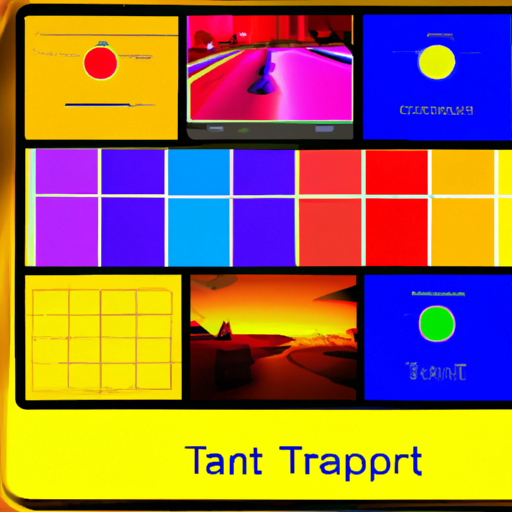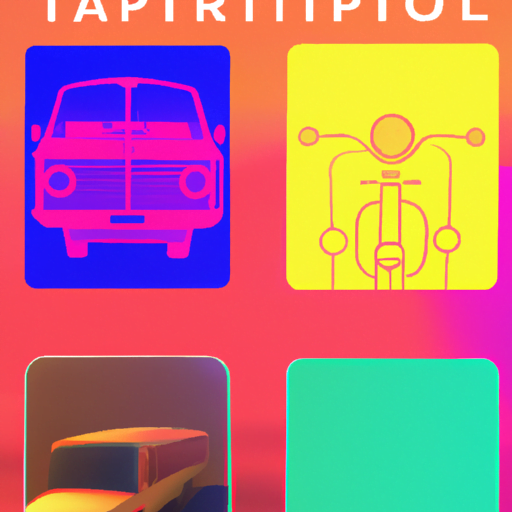
-
Table of Contents
- Interface Design for Transportation and Navigation Apps
- The Importance of Interface Design in Transportation and Navigation Apps
- Key Principles of Interface Design for Transportation and Navigation Apps
- 1. Simplicity and Clarity
- 2. Consistency
- 3. Contextual Awareness
- 4. Feedback and Guidance
- 5. Accessibility
- Case Studies: Successful Interface Design in Transportation and Navigation Apps
- 1. Uber
- 2. Moovit
- Conclusion
Interface Design for Transportation and Navigation Apps

Transportation and navigation apps have become an integral part of our daily lives, helping us navigate through unfamiliar places, find the fastest routes, and avoid traffic congestion. The success of these apps heavily relies on their interface design, which plays a crucial role in providing a seamless and user-friendly experience. In this article, we will explore the key principles and best practices for interface design in transportation and navigation apps, backed by research, case studies, and statistics.
The Importance of Interface Design in Transportation and Navigation Apps
Interface design is the bridge between users and technology, and in the case of transportation and navigation apps, it is the key to ensuring a smooth and efficient user experience. A well-designed interface can make the difference between a frustrating and confusing app and one that users find intuitive and enjoyable to use.
According to a study conducted by the University of California, Berkeley, 94% of drivers who use navigation apps reported that the interface design significantly influenced their overall satisfaction with the app. This highlights the importance of investing time and effort into creating a user-friendly interface that meets the needs and expectations of users.
Key Principles of Interface Design for Transportation and Navigation Apps
When designing the interface for transportation and navigation apps, there are several key principles that should be considered to ensure a positive user experience:
1. Simplicity and Clarity
The interface should be simple and easy to understand, even for first-time users. Avoid cluttering the screen with unnecessary information or complex features. Use clear and concise language, and make sure the most important information is easily visible and accessible.
For example, the popular navigation app Waze uses a clean and minimalistic interface, with large buttons and clear icons. The main screen displays only the essential information, such as the current location, destination, and estimated time of arrival.
2. Consistency
Consistency is key to creating a seamless user experience. Use consistent design elements, such as colors, fonts, and icons, throughout the app. This helps users quickly understand and navigate the interface, as they become familiar with the visual language of the app.
Google Maps is a great example of a navigation app that maintains consistency in its interface design. The app uses the same color scheme, typography, and iconography across different screens and features, creating a cohesive and familiar experience for users.
3. Contextual Awareness
Transportation and navigation apps should be aware of the user’s context and provide relevant information accordingly. For example, if the user is driving, the app should prioritize displaying information that is essential for navigation, such as upcoming turns or traffic alerts. On the other hand, if the user is walking, the app should focus on pedestrian-friendly routes and points of interest.
Citymapper, a popular transportation app, excels in contextual awareness. The app automatically detects the user’s mode of transportation and provides tailored information, such as real-time bus or train schedules, bike-sharing availability, or walking directions.
4. Feedback and Guidance
Providing feedback and guidance is crucial in transportation and navigation apps, as users heavily rely on them for directions and route planning. The interface should provide clear and timely feedback, such as turn-by-turn instructions, voice guidance, or visual cues, to help users navigate effectively.
Apple Maps is known for its clear and precise turn-by-turn instructions, which are displayed on the screen and accompanied by voice guidance. The app also provides haptic feedback through the iPhone’s vibration motor, giving users a tactile confirmation of upcoming turns.
5. Accessibility
Accessibility should be a top priority when designing transportation and navigation apps. Consider the needs of users with disabilities, such as visual impairments or motor disabilities, and ensure that the interface is inclusive and usable for all users.
For example, the navigation app BlindSquare is specifically designed for visually impaired users. It uses voice guidance and audio cues to provide directions and information about nearby points of interest, making it accessible and useful for people with visual impairments.
Case Studies: Successful Interface Design in Transportation and Navigation Apps
Let’s take a closer look at two successful transportation and navigation apps that have excelled in interface design:
1. Uber
Uber revolutionized the transportation industry with its user-friendly interface design. The app’s interface is simple and intuitive, allowing users to request a ride with just a few taps. The main screen displays a map with nearby drivers, estimated arrival times, and fare estimates.
Uber’s interface also incorporates contextual awareness by automatically detecting the user’s location and suggesting popular destinations nearby. The app provides real-time updates on the driver’s location and estimated time of arrival, ensuring a seamless and transparent experience for users.
2. Moovit
Moovit is a public transit app that provides real-time information and directions for bus, train, and subway routes. The app’s interface is designed to simplify the complex process of navigating public transportation.
Moovit uses a clean and minimalistic interface, with a focus on legibility and clarity. The app displays real-time arrival times, route maps, and step-by-step directions, making it easy for users to plan their journeys. Moovit also incorporates user-generated content, such as crowd-sourced reports on delays or disruptions, to provide accurate and up-to-date information.
Conclusion
Interface design plays a crucial role in the success of transportation and navigation apps. By following key principles such as simplicity, consistency, contextual awareness, feedback and guidance, and accessibility, app designers can create interfaces that provide a seamless and user-friendly experience.
Successful apps like Uber and Moovit demonstrate the importance of thoughtful interface design in creating intuitive and efficient transportation and navigation experiences. By incorporating these principles and learning from successful case studies, designers can create interfaces that meet the needs and expectations of users, ultimately leading to higher user satisfaction and adoption rates.
